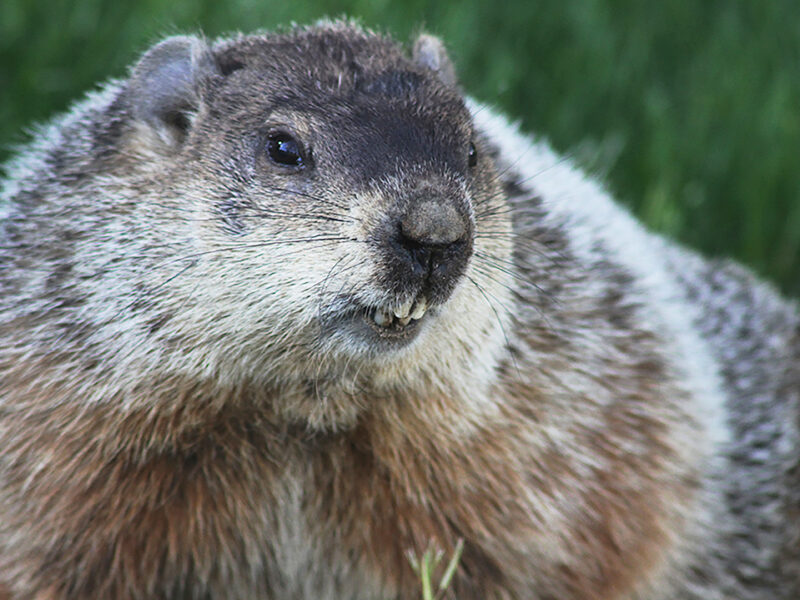
Punxsutawney Phil, by another name, is a woodchuck or groundhog.
According to nuisance wildlife trapper Dell Cullum, whereas the raccoon and squirrel, the South Fork’s two most common wildlife pests, generally go by their common names throughout the United States, the woodchuck has at least 15 different names, depending upon the part of the country where it resides. Of these, Dell’s favorite is the “whistle pig,” used throughout much of the Midwest.
Growing up in Mattituck on the North Fork, I only saw two in 20 years, and there were very few complaints about them. Dell ranks them as the third-most common wildlife pest on the South Fork. A little more than a year ago, Dell moved to southwestern Massachusetts, where, he says, there are no wildlife pest complaints.
Residing in Noyac, I occasionally see a woodchuck making its way along a shoulder of busy Noyac Road, but this woodchuck news comes mainly from Janet Grossman, writer-professor Karl Grossman’s wife. She lives a half mile away and has three woodchucks that thrive on the fruit and other food she raises in her long-standing garden there. She enjoys them.
We don’t have bears, prairie dogs or other hibernators here. The woodchuck is the only true hibernator we have on Long Island. Chipmunks spend several months of each winter underground in burrows, but they don’t hibernate. Their larders are well stocked with nuts and other food items. On a warm January day they might pop their heads and look around. Jean Held, who resides in Sag Harbor, is often visited in this way.
Gray squirrels have long quiet periods when they are holed up in a hollow tree or leafy drey. They sleep much of the winter away but never hibernate.
In America, animals and a few birds in the whip-poor-will family that hibernate undergo huge internal temperature drops, and their breathing rate lowers dramatically. That is why the man who wakes up Punxsutawney Phil each February sometimes has to shake him a bit to get him going, like a spring-wound toy that doesn’t respond to mere rewinding.
For a long time in the 1900s there were very few woodchucks, if any, on the South Fork. Skunks were a much bigger problem. After the Long Island Expressway was constructed in the 1960s, woodchuck burrows became prominent in the soil banks on that thoroughfare’s north and south sides. Observable woodchuck dens became closer to Riverhead and Hampton Bays. Then, finally, the explosion, along with flying squirrels, onto the South Fork.
Staten Island now has Staten Island Chuck, as well as at least two permanent Groundhog Day celebrities on Long Island: Holtsville Hal and Melville Mel. Tradition has it that if the groundhog, upon awakening, sees its shadow, it will slumber away another six weeks.
Punxsutawney Phil is a male, as are Staten Island Chuck and the two Long Island-celebrated groundhogs. I am looking forward to the day when a female groundhog makes it to the top and finally has a day named after her.
Why not right here on the South Fork? Wouldn’t that be a great omen? Let’s see: Southampton Sue? East Hampton Edwina? Hampton Bays Harriet? Montauk Mary?
You name it!